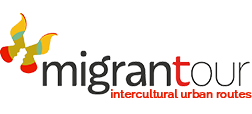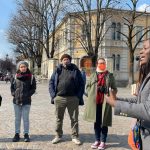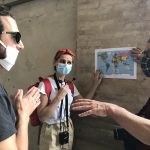The river runs through it and bridges hold it together
Migration is nothing new in Parma: since the second half of the 19th century, Parmensi have participated in the “Great Emigration”: from peasants who go to Brazil to circus wanderers, to those who become restaurateurs, shopkeepers or café owners… And then those who with Fascism take refuge in France and then in Europe and America. Finally, since the 1980s, migration from abroad with migrants and refugees accounting for 15 percent of residents, one of the highest percentages nationwide.
This is why Migrantour in Parma! To highlight the transformations that have gone through and are going through it thanks to the continuous migrations over time. We want, with intercultural escorts, to look with other eyes at the historical and meeting places of the city, because, you know, the look depends on memories… and, then the imperial staircase of the Pilotta takes on the appearance of the high waves ploughed by the Transatlantic from Argentina to Italy, the Ducal Park comes to host the baobabs of Central Africa, the Ghiaia the Nigerian rural markets… In short, the small city of Parma, former home of Maria Luigia, is transformed into a sort of capsule containing many places, many elsewhere.
The Kwa Dunìa association, with the Migrantour project born in Parma in 2019, has bet once again by believing in people, their plurality and their ability to engage and forge relationships for the common good. The result is a sparkling group of accompanying men and women who give us opportunities to marvel at what, though before our eyes, we struggle to see in its infinite nuances.
Itinerari
Info
Contacts
In Parma intercultural urban routes are promoted by Kwa Dunia
Local coordinator: Rosanna Pippa
Phone number:+39 3492604456
Mail: migrantourparma@gmail.com
Facebook: Migrantour Parma
Video promo: Migrantour Parma










